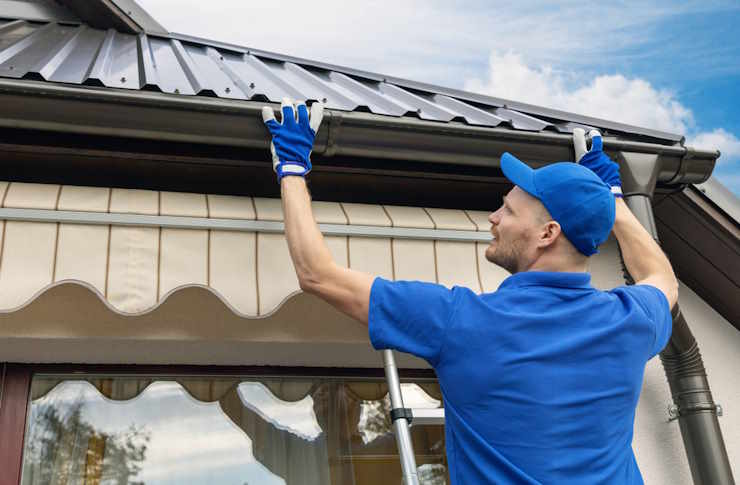Window Replacement Guide: Key Decisions and Timelines
Window replacement represents a significant home improvement investment that can enhance energy efficiency, increase property value, and improve comfort levels throughout your residence. Whether you're dealing with drafty windows, condensation issues, or simply outdated frames, understanding the replacement process helps ensure successful project outcomes. From selecting qualified contractors to understanding installation timelines, several factors influence the overall experience and long-term satisfaction with new windows.

How to Choose a Contractor for Window Replacement
Selecting the right contractor forms the foundation of any successful window replacement project. Start by verifying licensing and insurance requirements in your area, as these credentials protect both homeowners and workers during installation. Request multiple quotes from local contractors to compare pricing, materials, and installation approaches.
Experience with your specific window type matters significantly. Ask potential contractors about their familiarity with your home’s architectural style, window materials, and any structural considerations. Review recent customer testimonials and request references from projects completed within the past year. Professional contractors should provide detailed written estimates that include material specifications, labor costs, cleanup procedures, and project timelines.
Check Better Business Bureau ratings and online reviews across multiple platforms. Reputable contractors often display certifications from window manufacturers, indicating specialized training in proper installation techniques. Avoid contractors who request full payment upfront or pressure you into immediate decisions during initial consultations.
Benefits of Energy Efficient Window Replacement
Energy efficient window replacement delivers measurable improvements in home comfort and utility costs. Modern windows feature advanced technologies like low-emissivity coatings, argon gas fills, and multi-pane construction that significantly reduce heat transfer. These features help maintain consistent indoor temperatures while reducing strain on heating and cooling systems.
Double-pane and triple-pane windows create insulating barriers that minimize drafts and cold spots near window areas. Proper installation of energy efficient windows can reduce heating and cooling costs by ten to twenty-five percent annually, depending on existing window conditions and local climate factors.
Beyond energy savings, these windows often include improved sound insulation properties that reduce outside noise transmission. Many energy efficient windows qualify for federal tax credits and local utility rebates, helping offset initial investment costs. Enhanced UV protection preserves interior furnishings, flooring, and artwork from sun damage over time.
How Long Does Window Replacement Usually Take
Window replacement timelines vary based on project scope, window types, and installation complexity. Standard single-window installations typically require two to four hours per window when replacing existing windows with similar sizes and styles. Full-frame replacements take longer than insert installations due to additional structural work requirements.
Weather conditions significantly impact installation schedules, particularly for exterior work. Professional installers often avoid window replacement during extreme temperatures, heavy precipitation, or high wind conditions to ensure proper sealing and safety protocols.
Custom window orders extend overall project timelines, sometimes requiring four to twelve weeks for manufacturing and delivery. Standard window sizes usually arrive within one to three weeks after ordering. Multiple window projects benefit from bulk scheduling, allowing contractors to complete entire home installations over several consecutive days rather than scheduling individual appointments.
Factor in potential delays for permit approvals if your local building codes require inspection for window replacements. Older homes may present unexpected structural issues that extend installation timelines, particularly when upgrading to larger window sizes or different frame materials.
| Window Type | Installation Time | Cost Range | Key Features |
|---|---|---|---|
| Single-Hung Vinyl | 2-3 hours | $200-$600 | Low maintenance, energy efficient |
| Double-Hung Wood | 3-4 hours | $400-$800 | Classic appearance, customizable |
| Casement Windows | 2-4 hours | $300-$700 | Maximum ventilation, easy operation |
| Picture Windows | 3-5 hours | $250-$900 | Unobstructed views, fixed installation |
Prices, rates, or cost estimates mentioned in this article are based on the latest available information but may change over time. Independent research is advised before making financial decisions.
Planning Your Window Replacement Project
Successful window replacement projects require careful planning and realistic timeline expectations. Schedule installations during moderate weather seasons when contractors have more flexible availability and weather delays are less likely. Spring and fall often provide optimal conditions for window replacement work.
Prepare your home by removing window treatments, clearing furniture from window areas, and protecting nearby surfaces from construction debris. Communicate with contractors about access requirements, parking arrangements, and any specific timing constraints for your household schedule.
Consider replacing windows in logical groupings, such as completing one floor before moving to another, or focusing on the most problematic windows first. This approach allows you to experience immediate benefits while spreading costs across multiple budget periods if necessary.
Window replacement projects enhance home value, comfort, and energy efficiency when planned and executed properly. Understanding contractor selection criteria, energy efficiency benefits, and realistic installation timelines helps homeowners make informed decisions that deliver long-term satisfaction and improved living conditions.




